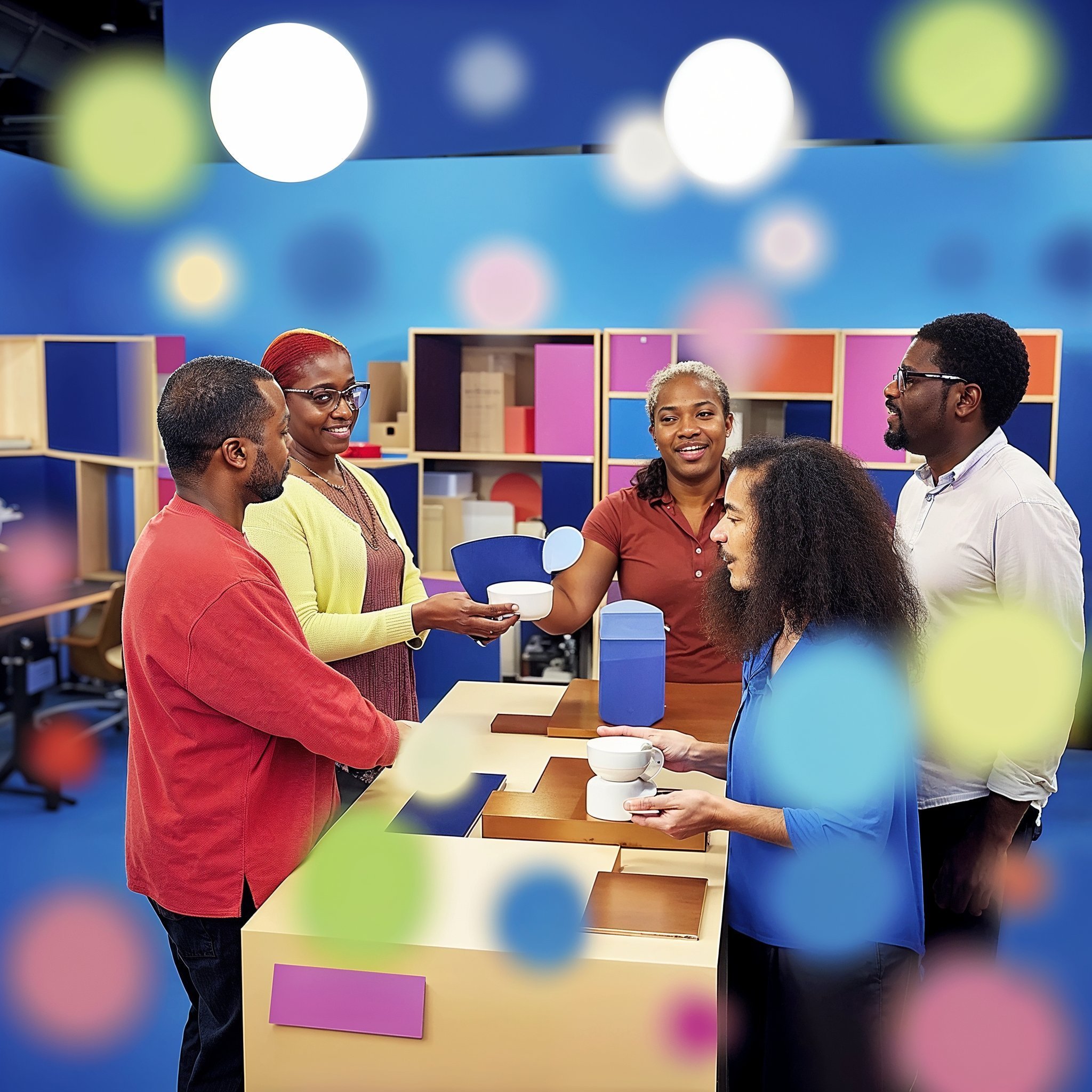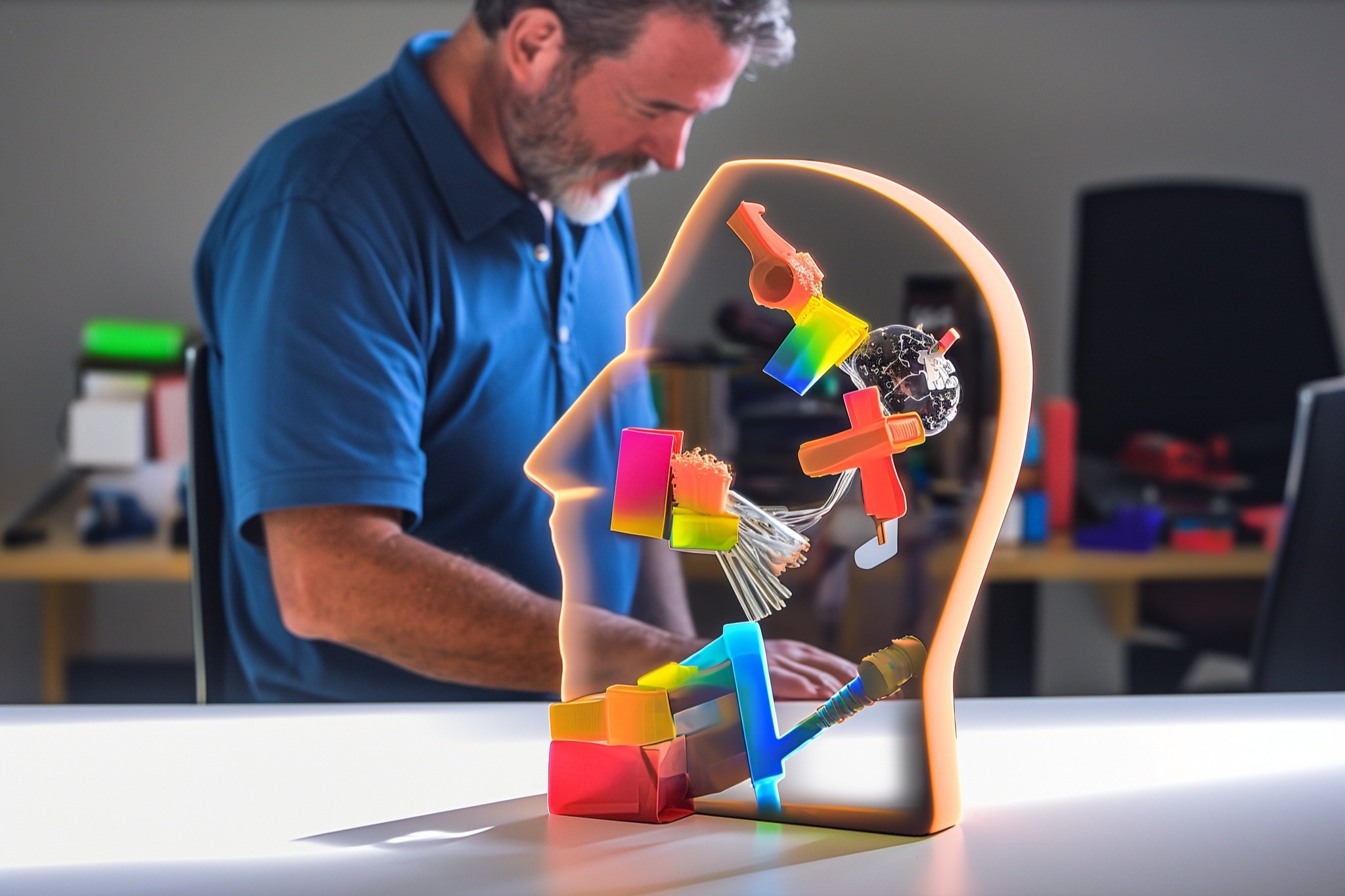Creative Leadership Lab
A Journey in Design Thinking for Educators
Variations of this program were developed and deployed for the following clients: Denmark Ministry of Children and Education, The Scottish Parliament Education Committee, Council of British International School, The Heads Conference, The EdTech World Forum, The King Fahad Academy, Kelvinside Academy, Balfron High School, Mearns Primary, St Luke’s High School, Kamehameha Maui, Hawaii Technology Academy, MIT Morningside Academy, The Wheeler School - reaching 879 officials, academic leaders and educators.
Redefining education.
As one of the four learning specialists who developed the "Creative Leadership Lab" at NuVu, my role was pivotal in both the conceptualization and customization of the program. I actively contributed to the design of the core curriculum, ensuring it aligned with our vision of empowering educational leaders. Beyond the initial development, I played a key role in refining and tailoring the program for individual clients, adapting it to meet their specific needs and cultural contexts. This involved adjusting the modules and content to better suit different educational settings and objectives, ensuring the program's effectiveness and relevance across various environments.
The Four Part Program
During the "Creative Leadership Lab," educational leaders were immersed in a structured, multi-stage program designed to enhance their creative and innovative capabilities. This program was meticulously crafted to provide participants with a rich array of tools and strategies focused on revolutionizing educational methodologies.
-

Conceptual Thinking
Educators engaged in exercises to develop their conceptual thinking skills, learning to understand complex ideas and find innovative solutions to challenging problems. This initial phase set the tone for the camp, encouraging participants to see beyond immediate challenges and envision broader impacts and purposes of educational initiatives.
-

Brainstorming
In the brainstorming sessions, educators stepped out of their comfort zones, generating a plethora of ideas. This abundance of creativity led to more innovative and actionable solutions that could be prototyped and tested. The emphasis was on improving brainstorming skills, making it a dynamic tool in their educational arsenal.
-

Critique
Educators learned the art of critique, analyzing solutions to discern their effectiveness and potential for improvement. This part of the camp emphasized constructive feedback, crucial for refining ideas and projects. It fostered a collaborative culture among participants, enhancing the quality and innovation of their educational projects.
-

Ideate & Prototype
Finally, in the project phase, educators applied all their newly acquired skills. They explored real-world topics using the NuVuX Studio Cards, engaging in a hands-on, iterative process. This phase was instrumental in applying conceptual thinking, brainstorming, and critique in a practical, project-based setting.
Modules
The Creative Leadership Lab's modular system was designed to provide flexibility, allowing for customization to different cultural environments and educational needs. Each module could be adapted to fit varying time constraints and specific learning goals. This modular approach ensured that the program could be tailored to different educational contexts, enhancing its relevance and impact. The ability to adjust each module according to the unique needs of participants across various cultural settings made the Lab an effective tool for a wide range of educators globally. This adaptability was key to the Lab's success, ensuring that it could meet diverse educational challenges and foster innovation in a multitude of learning environments.
-
Detail: Educators collaboratively identify specific challenges in their institutions, then trace these issues back to their roots. This involves discussing systemic, policy, or cultural factors that contribute to these challenges.
Outcome: Participants gain insights into the deeper causes of educational issues, leading to more effective and long-term solutions.
-
Detail: Educators explore how principles from different fields (like psychology, technology, or arts) can be applied to enhance teaching and learning. They discuss and plan cross-curricular initiatives or interdisciplinary approaches.
Outcome: Encourages innovative thinking and application of a diverse knowledge base in educational strategies.
-
Details: Using tools like mind maps or visual boards, educators articulate their vision for the future of education at their institution. They link current practices to aspirational goals, identifying necessary changes or innovations.
Outcome: This activity helps in setting clear, strategic directions and goals for educational development.
-
Detail: Small groups are given real or hypothetical educational challenges to solve. These workshops might focus on developing new teaching strategies, addressing classroom management issues, or integrating new learning technologies.
Outcome: Strengthens collaborative problem-solving skills and results in actionable strategies for real-world educational challenges.
-
Detail: Participants brainstorm innovative ways to integrate technology, discussing emerging tools like VR/AR, educational apps, or digital collaboration platforms. The focus is on enhancing learning experiences and operational efficiency.
Outcome: Produces practical strategies for technology integration, aligning with the needs of modern learners and the digital transformation in education.
-
Detail: Participants form circles to give and receive feedback on ideas or projects. This is structured to ensure each participant's voice is heard in a respectful, supportive setting, emphasizing key feedback principles.
Outcome: Enhances ability to give and receive meaningful feedback, fostering a culture of open communication and continuous improvement.
-
Detail: Focused sessions on developing the art of constructive critique, including techniques to provide balanced, helpful feedback that is both encouraging and critical.
Outcome: Builds a skill set for effective critique, essential for educators in refining teaching methods and student interactions.
-
Detail: Sessions designed to help participants turn critiques into concrete steps for improvement, emphasizing action-oriented feedback.
Outcome: Translates feedback into tangible improvements, driving positive changes in educational practices.
-
Detail: Workshops where brainstormed ideas are refined based on peer critiques, focusing on practical application and improvement.
Outcome: Leads to more polished and effective educational strategies and solutions.
-
Detail: Participants design and create prototypes of new educational tools or methods, using materials and digital tools.
Outcome: Fosters creativity and hands-on experience in developing innovative educational solutions.
-
Detail: Planning sessions for pilot educational initiatives, focusing on implementation and impact assessment.
Outcome: Prepares participants for real-world application and evaluation of new educational programs.
-
Detail: Developing strategies for integrating new ideas and prototypes into the educational environment effectively.
Outcome: Ensures the practical application of innovative concepts in real educational settings.
The Impact
The Creative Leadership Lab significantly impacted educators, aligning with its objectives to revolutionize teaching and learning approaches. Participants, equipped with innovative toolkits and a transformative mindset, revisited and reshaped curricula, infusing them with fresh perspectives and methodologies. The brainstorming techniques enhanced their ability to create inclusive, idea-rich classrooms. Through critique sessions, educators developed frameworks for continuous evaluation and refinement of educational content, ensuring its relevance in a rapidly evolving learning landscape. The practical project phase allowed participants to apply their learnings, leading to the implementation of dynamic, interactive, and student-centered teaching methods. This lab not only upgraded individual skills but also catalyzed systemic changes within educational institutions, resulting in curricula more attuned to real-world challenges and learning environments that nurtured creativity, critical thinking, and collaboration.
The Challenges
The challenges experienced in deploying the Creative Leadership Lab across various cultural environments were multifaceted. Adapting the program to suit different cultural contexts was a key hurdle, requiring a nuanced understanding of local educational norms and practices. There was a need for bespoke modules that resonated with the unique cultural dynamics of each region, which involved extensive research and collaboration with local educators.
Additionally, language barriers and differing pedagogical approaches presented significant challenges. The facilitators had to ensure that the content was not only translated accurately but also culturally relevant and sensitive. This sometimes meant rethinking and redesigning activities and methodologies to align with local educational philosophies and practices.
Another challenge was overcoming resistance to new teaching methods, which varied greatly depending on cultural attitudes towards education and change. Gaining buy-in from local educators and administrators often required demonstrating the tangible benefits of the program through pilot projects or case studies.
Addressing these challenges necessitated a flexible, adaptable approach, with a strong emphasis on collaboration, cultural understanding, and ongoing feedback from participants to refine and improve the program for each specific context.

